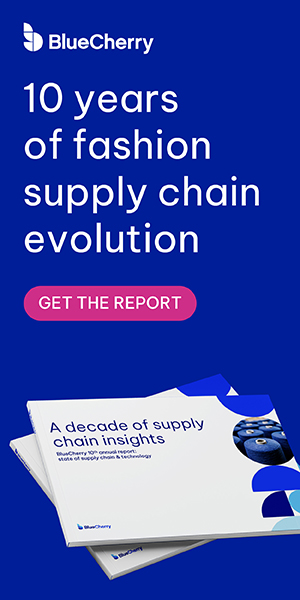Topics
Surviving Disruption: How Fashion and Footwear Brands Can Build a Resilient Supply Chain Strategy

The global fashion and footwear industry has long thrived on creativity, speed, and trendsetting. But behind the scenes of every perfectly timed product drop or best-selling seasonal collection lies a complex, often fragile supply chain. In an era where consumer expectations, compliance requirements, and external disruptions continue to mount, the need to assess, manage, and respond to supply chain risk has never been more critical.
The challenge: supply chain disruption hurts the bottom line
According to a recent McKinsey study, it takes an average of two weeks to correct a supply chain interruption. In contrast, sales and operations issues typically take only one week to resolve. This might seem like a minor difference—but not when you do the math. Let’s say your supply chain operations cost your business $500,000 per week. That extra week of disruption costs you an additional $500,000—an amount that could easily tip profit margins, delay launches, or even result in lost customers.
But that’s only scratching the surface. For fashion and footwear brands, the stakes are even higher. Your supply chain doesn’t just move products—it’s the engine that drives availability, brand reputation, customer satisfaction, and profitability.
What can go wrong? More than you think.
When people think of supply chain disruption, they often imagine weather delays, labor strikes, or shipment errors. While those remain real threats, today’s risk factors are much broader and more nuanced.
1. Regulatory compliance and consumer expectations
It’s no longer enough to just deliver the right product. Increasingly, governments around the world are tightening compliance regulations, especially in areas of sustainability, labor practices, and traceability.
Simultaneously, consumers are demanding more from their favorite brands. They want transparency, ethical sourcing, and environmental accountability. They want to know the environmental impact of that t-shirt or pair of sneakers before they commit. They want to feel good—not just look good—about their purchases. If your brand fails to meet those expectations, loyalty may shift elsewhere.
2. Stockouts and margin impact
Out-of-stock products can cost apparel and footwear companies up to 20% of their gross margin. In an industry where product differentiation is everything, missing sizes, colors, or fits isn't just inconvenient—it’s expensive. Imagine the impact of improving your product availability by just 5%. What would that mean for your company’s bottom line?
Those improvements don’t happen by accident. They come from better planning, tighter coordination, and a more agile response to disruptions—all of which begin and end with the supply chain.
The solution: strategy, talent, and technology
To stay ahead, fashion and footwear companies must approach supply chain risk not just as a challenge, but as an opportunity. That means investing in strategy, people, and platforms that allow you to detect, manage, and respond to disruption before it mushrooms into a full-blown crisis.
1. Talent that knows your business
No one knows your brand better than the people who work on it daily. Your internal teams understand the intricacies of your operations, the pulse of your market, and the nuances of your customer base. That deep knowledge should be the foundation of your response strategy.
Whether your organization is leveraging AI-driven tools or traditional decision-making processes, the insights and actions should be guided by experienced leaders who know how to connect the dots. Building and empowering cross-functional teams—from planning and sourcing to logistics and retail—ensures you have eyes on every part of the process and people who can act quickly when risks emerge.
2. Digital tools and automation
Modern disruptions require modern solutions. Digitization offers an unprecedented opportunity to detect potential issues before they surface and automate responses that once took days or weeks.
Things to consider: data, visibility, and flexibility
As you strengthen your supply chain, some important strategies to keep top of mind:
1. You always need more data — but it’s OK to start with what you have
We hear it everywhere: data is the new oil. But raw data alone isn’t enough. What matters is access to accurate, high-quality data and how you organize, interpret, and apply it.
The good news? You probably already have more data than you think—scattered across ERPs, spreadsheets, retail platforms, logistics systems, and supplier emails. The goal is to bring it together and build visibility across your full supply chain.
Start simple:
- Aggregate historical sales and returns data
- Track inventory flow across warehouses and stores
- Monitor supplier lead times and quality issues
From there, you can layer in additional datasets such as consumer behavior trends, social signals, and even climate forecasts to fine-tune your supply chain planning.
2. Use end-to-end tools to manage compliance and ESG
Regulatory compliance and social accountability are no longer optional. Whether you're managing ESG (Environmental, Social, and Governance) requirements or mapping your supply chain to meet forced labor laws, the data required is growing exponentially.
Tools that integrate compliance management into supply chain operations are essential. These platforms not only capture data but can help flag potential risks, streamline audits, and simplify reporting—saving time while keeping your brand out of hot water.
3. Make planning dynamic and responsive
Traditional planning looks backward. Successful brands now take a forward-looking approach—blending historical data with real-time signals and predictive modeling. Let’s say you’re planning your winter outerwear assortment. Historical sales are a great starting point—but what happens if the ski season starts late in Jackson Hole but runs long in Mammoth? That’s where agile planning and scenario modeling come into play.
Modern planning must account for:
- Regional and global economic conditions
- Weather patterns and climate shifts
- Consumer sentiment on social media
- Shipping routes, port availability, and geopolitical events
The ability to adjust orders, production start dates, or shipping destinations on the fly can make or break a season.
Sales and operations planning: your secret weapon
Sales and operations planning (S&OP) is more than a buzzword—it’s your frontline defense against chaos. But to be effective, it must go beyond a monthly meeting or static spreadsheet.
An effective S&OP framework includes:
- Real-time dashboards highlighting potential risks across sourcing, production, and delivery
- Cross-functional review teams empowered to make decisions quickly
- Scenario planning tools to evaluate multiple paths forward
- Automated alerts and AI-driven insights to detect disruptions before they hit
Imagine this: you’re weeks away from a major collection drop. A labor strike threatens a key port of exit. Your dashboard flags the issue, your team convenes, and your system offers three alternatives—reroute via a nearby port, shift delivery timelines, or adjust regional inventory allocations. With an efficient S&OP process, you not only respond—you do it faster than your competitors.
From reactive to proactive: the next level of resilience
The future of supply chain management is predictive, automated, and intelligent. We’re not just talking about dashboards anymore—we’re talking about systems that:
- Analyze vast amounts of global data
- Identify trends and anomalies
- Recommend predefined resolutions
- Automatically trigger changes in response
This is the move from attended to semi-autonomous or autonomous supply chain management. With every disruption you handle, your system learns. With every lesson your team documents, your playbook gets sharper. Over time, your brand becomes not just responsive—but resilient.
And that resilience shows up in on-time product launches, fuller shelves, happier customers, and a stronger bottom line.
Your brand is only as strong as its supply chain
In the fast-paced world of fashion and footwear, disruption is inevitable. But the brands that survive—and thrive—are those that plan for it, build systems to absorb it, and empower their people to respond to it.
Yes, the risks are real: regulations, consumer expectations, stockouts, delays, climate events. But the opportunities are just as real. Every disruption is a chance to get smarter, faster, and more connected.
- It starts with recognizing where your vulnerabilities lie.
- It continues with aligning your data, teams, and tools.
- And it succeeds when you move from reactive to proactive.
Whether you're just starting to evaluate your risk strategy or you're ready to implement AI-driven planning tools, the time to act is now. Don’t wait for the next disruption to test your limits.
At BlueCherry, our suite of supply chain products, including PLM (Product Lifecycle Planning), Statistical Demand Planning, Inventory Planning, ShopFloor Control, and Supplier Planning, helps you build a smarter, more resilient supply chain.
Visit us at Bluecherrysuite.com to learn more about how these solutions can help future-proof your supply chain.

